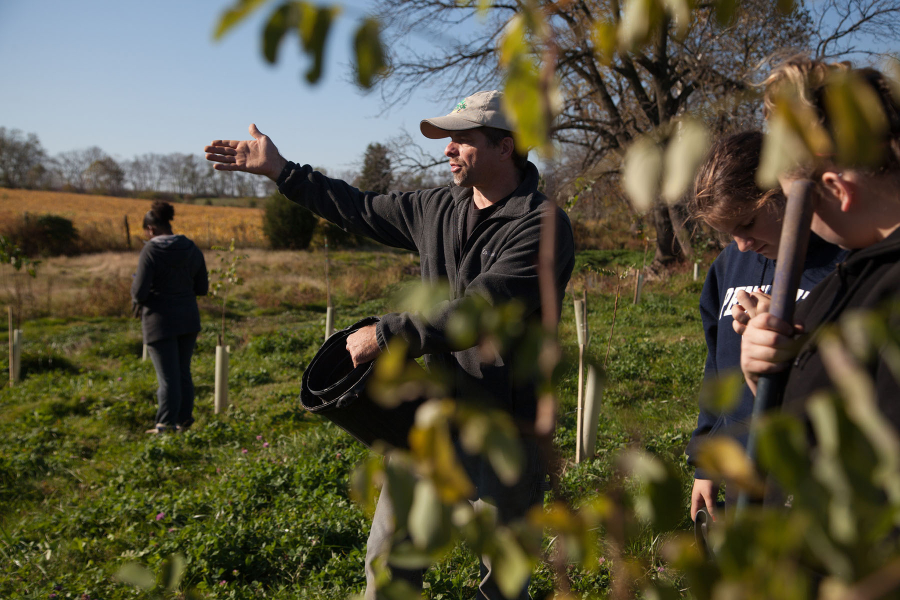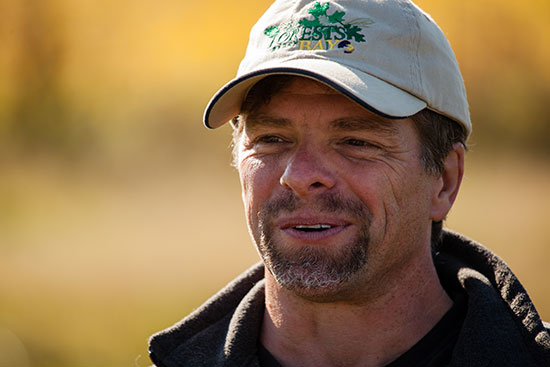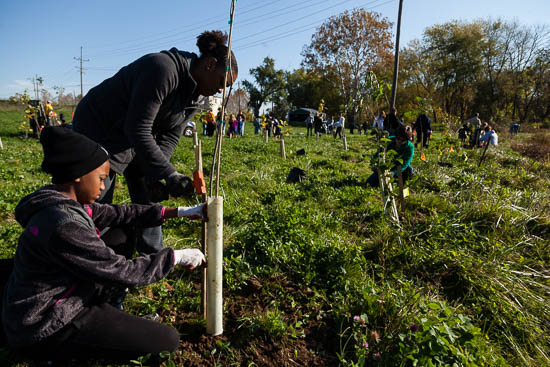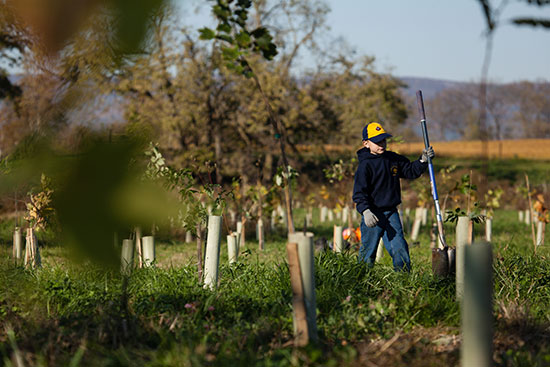Fostering environmental stewardship through forest restoration
Educator strives to inspire young minds by making restoration events fun and simple.

Forests are critical to the health of the Chesapeake Bay—they protect clean water and air, provide habitat to wildlife and support the region’s economy. However, since European settlement of the region in the 17th century, deforestation has taken a toll on the once thriving forests of the mid-Atlantic region. Human influences such as development and parcelization have reduced forest acreage from 95 to about 45 percent of historic coverage.
Deforestation in the Bay region may seem a problem that is too complex to tackle, but one man, dubbed the modern-day Johnny Appleseed, is proof that a little curiosity, passion and hard work can have profound effects on the environment. John Smucker, a Technology Education teacher at Northwest Middle School in Taneytown, Maryland, has become a catalyst for reforestation efforts, melding his engineering experience with restoration initiatives.
Smucker recalls the moment 10 years ago that sparked his interest in forest restoration. “It all started behind my house with a reforestation effort, but all of the trees that were planted slowly died. I didn’t like that so I did a lot of research to help [the trees] out and fell in love with the process, which led me to start dropping acorns into empty tree shelters,” said Smucker.

The moment created a ripple effect that resulted in Smucker spearheading forest restoration by organizing volunteer plantings and entering into a partnership with Mount Saint Mary’s University and the Francis Scott Key Center. Both locations provide space for Smucker to grow the thousands of trees he uses for plantings.
Smucker spends about 700 hours every year in all aspects of creating riparian buffers, like meeting with landowners, auguring the holes, organizing the volunteers and also conducting the most critical part of the process Smucker says, maintenance. Plantings are held on Saturdays during April, May and October – the most opportune months for tree survivability and comfortable outdoor temperatures for volunteers to work.
When choosing planting locations, Smucker explains, “Being a grower really is a game changer for me, because I can fully understand what the trees need to survive.” Once a site is selected, he samples the soil, observes what plant species are in the area, spends time in his greenhouses flagging all of the appropriate trees for the site and rallies his volunteer base around the planting.

When it comes to tree plantings, the name of the game is fun and education. Many of his volunteers are young people who are in a mindset to learn. Each planting is preceded with an ecology lesson highlighting the importance of riparian zones, stream shading and nutrient removal. “As a middle school teacher it is important to organize the event so it’s fun and rewarding, because if they get frustrated, they will associate that frustration with tree planting. If they associate it with fun, then the environmental stewardship will perpetuate a lot better. If it’s organized right and goes smoothly then it’s a feel-good thing, just like in the classroom,“ Smucker explained.
Smucker encourages his students to work out solutions to engineering problems with the tree plantings and challenges them to think up innovative ways to overcome obstacles. “Tree planting and technology education are really the same thing. It’s problem solving and the engineering design process. What is the problem? What is the solution? Evaluate and modify,” said Smucker.

Over the years, Smucker’s volunteer base and partner organizations have expanded to the point where he has been able to launch an organization of his own, Stream Link Education, a nonprofit that organizes and leads tree plantings with local community members, organizations and businesses. “The coolest thing I think we do is Natives for Nonprofits. We grow trees for giveaways to other organizations, which is great because budgets are really tight and donations are hugely welcome. It also helps establish partnerships, not because I want something in return but because it’s neat to make connections,” said Smucker.
Smucker aims to perpetuate choices and actions by providing people with hands on educational experiences. “If you’re excited about something and value it, then demonstrate the value, they [the volunteers] will see it. The excitement can be catching,” he said. He continued to explain that in addition to educating others and improving the environment, his enthusiasm for restoration remains strong because he is still able to grow as well, “I’m going to turn 50 in January and I’m thinking, ‘if I do this right, I’ve got my 50’s and 60’s and if I can stay healthy, I can do this for a long time.’ And that’s great. There is always something to learn.”
To view more photos, visit the Chesapeake Bay Program's Flickr page

Comments
Where do the tree seeds come from? Last time I planted trees they were from, "this one guy, in Pennsylvania." I can get seeds and I'd rather send them to some kind of program than sell them on Ebay or send them out ten at a time to seed swappers.
Thank you!
Your comment has been received. Before it can be published, the comment will be reviewed by our team to ensure it adheres with our rules of engagement.
Back to recent stories